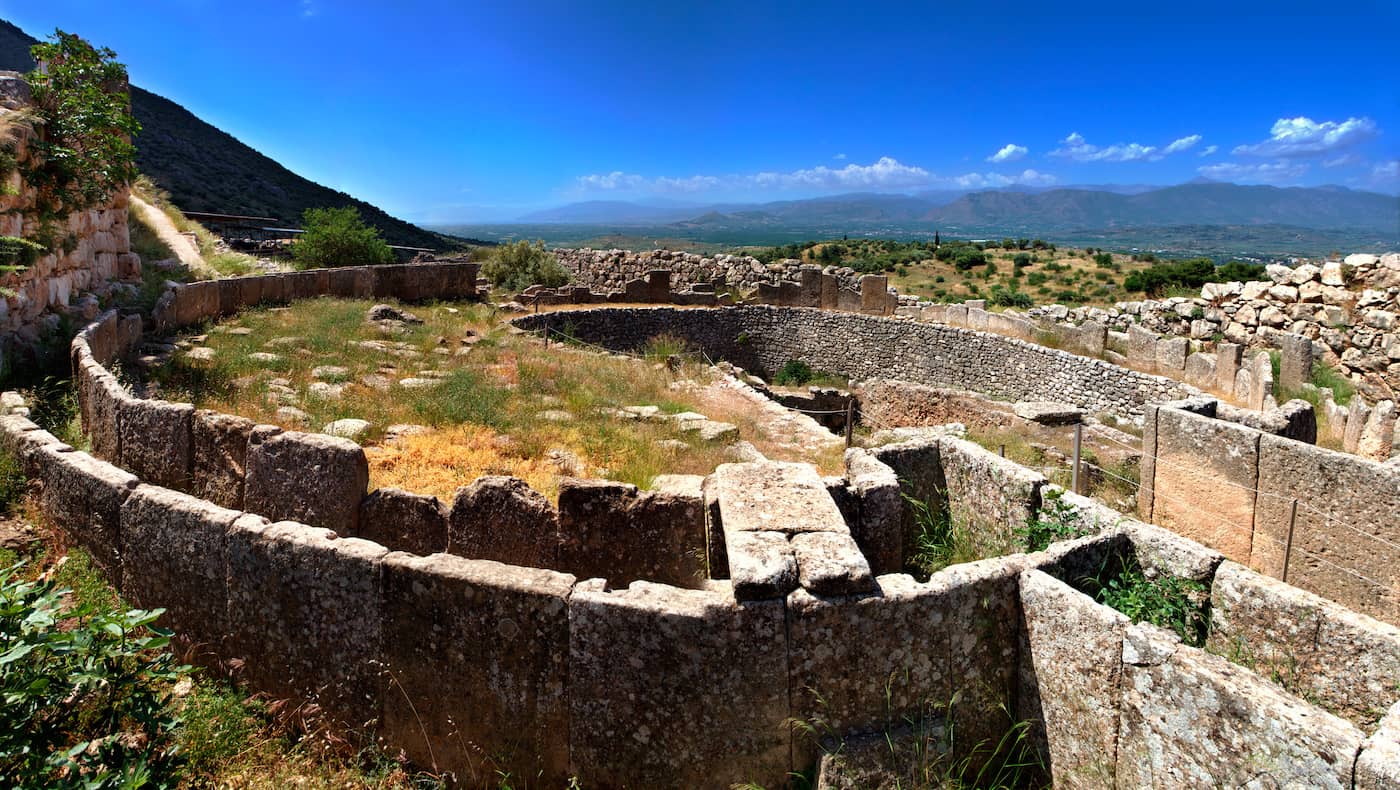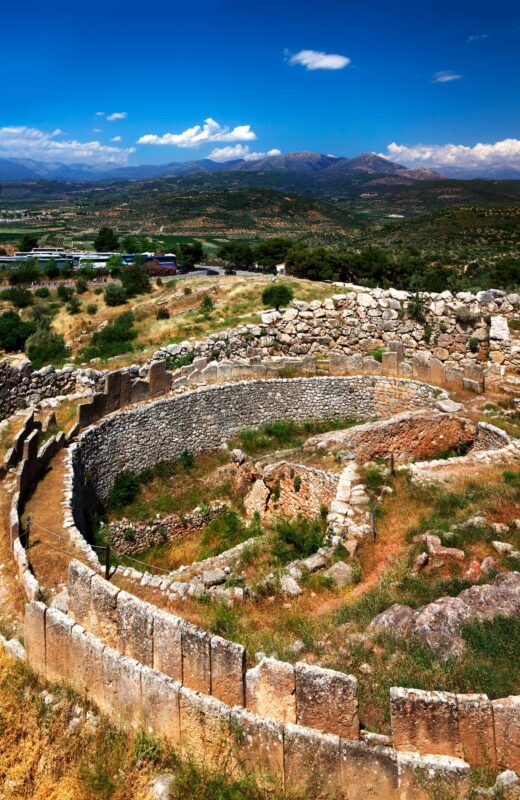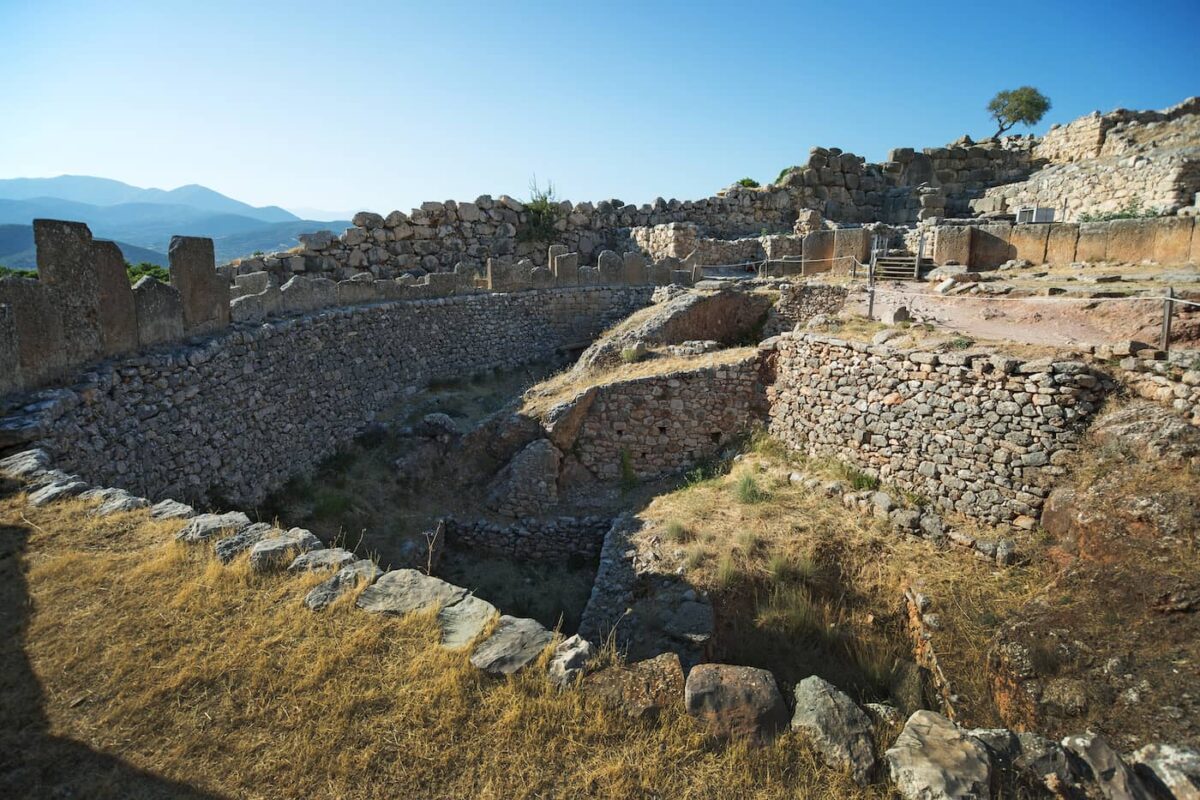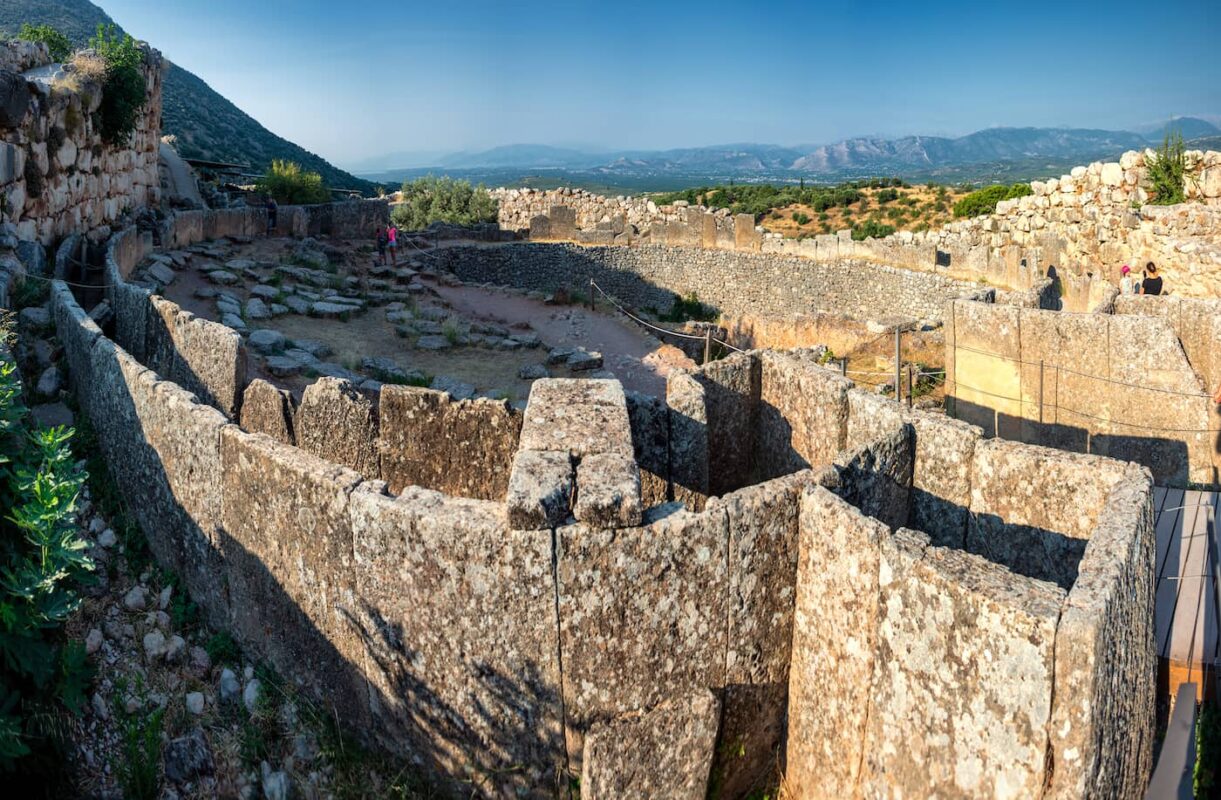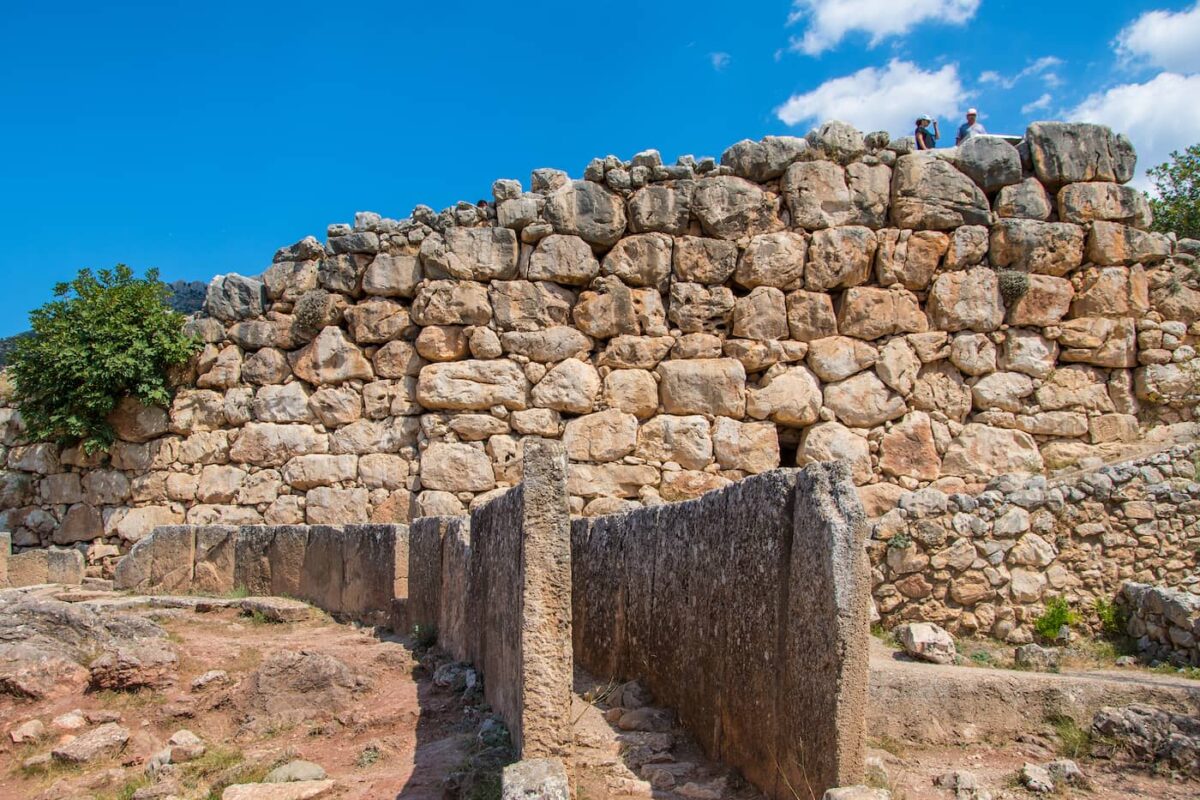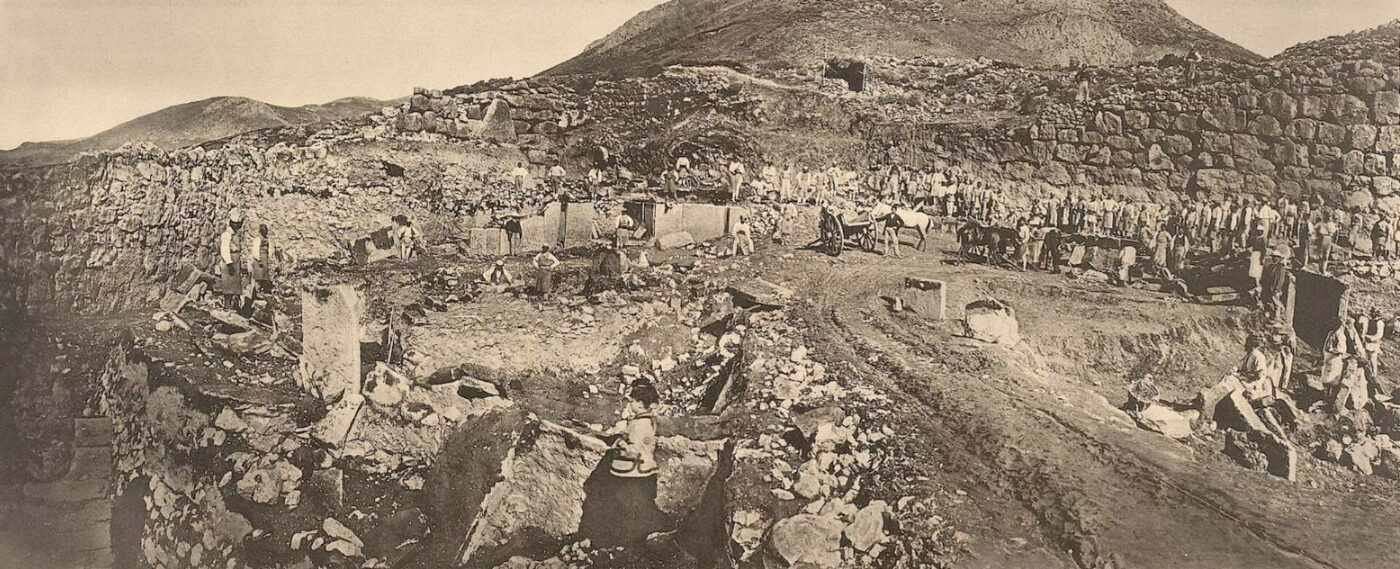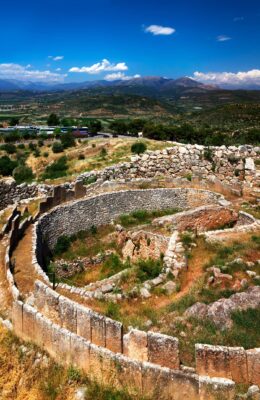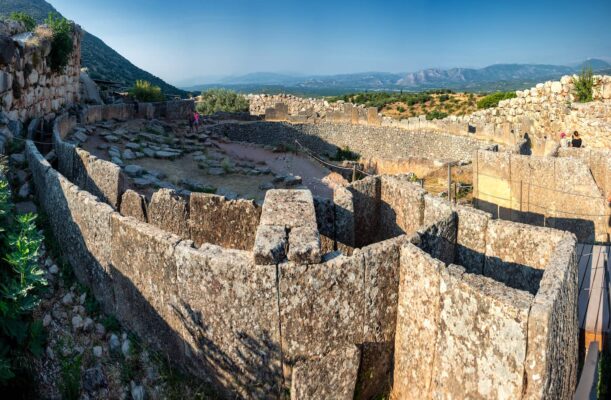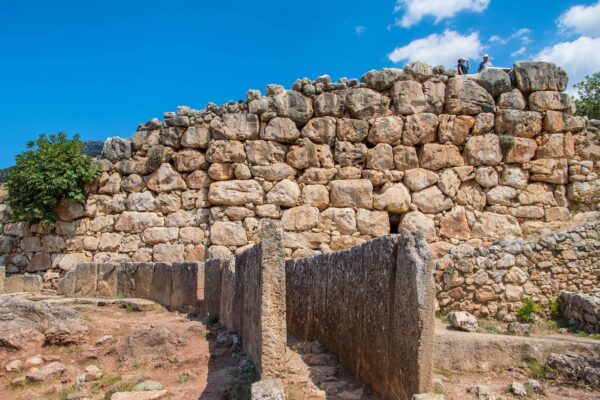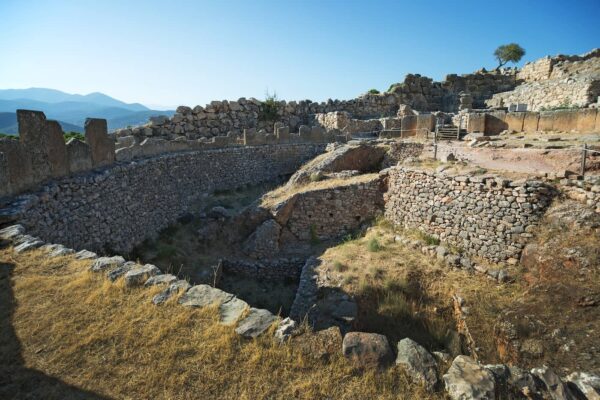Grave Circle A
Grave Circle A was unearthed inside the Acropolis of Mycenae, although it is speculated that originally it was located outside the walls, as part of an extensive cemetery. It was excavated in 1876 by Heinrich Schliemann, under the auspices of the Archaeological Service and the supervision of the Curator of Antiquities Panagiotis Stamatakis. Grave Circle A includes 6 rectangular and vertical shaft tombs, whose dimensions range from 3×3.50 m. to 4.50×6.40 m. The vertical shaft tomb consists of two parts: the main pit that exists on the natural rock and is used for burial, and the wider trench above it. The roof is supported by the side walls of the pit and is usually made of wood or slabs, while the wider trench is filled with soil after burial.
In total, the tombs of Circle A contained 19 burials, of which 9 belonged to men, 8 to women and 2 to infants. Except for Tomb II, which contained one burial, the rest contained from 2 to 5 burials. The dead were placed in a supine position, generally with direction from east to west. Tombs I-V were discovered by Schliemann, while Tomb VI was discovered a year later by Stamatakis. Based on the pottery found in Tombs I, II, III, and VI, it seems that Grave Circle A can be dated from the end of the Middle Helladic Period to the Late Helladic IIA period, or, in other words, from the 16th century BC. until the early 15th century BC.
The extraordinary wealth of the grave offerings showcases the high social status of the dead and their warlike character: jewelry and utensils made of gold, a large number of decorated swords and other bronze objects, as well as works made of imported materials such as amber, lazurite stone, faience and ostrich egg. At the same time, a small but remarkable group of clay vessels confirm the significant role of the Mycenean civilization at that time and pay justice to the Homeric characterization of Mycenae as “πολύχρυσων” (“golden”).
The legendary excavation of Grave Circle A impressed everyone with its valuable findings and laid the foundation of Greek Prehistory, paving the way for the study of a large, hitherto unknown civilization. The excavation of Mycenae made Schliemann as famous as ever and attributed him the title of “father of Mycenaean of Archeology “.
Shaft Grave I
It contained three burials of women, adorned with gold jewelry, while vessels of faience, ivory compass, two silver cups -one with a gold rim- copper utensils and several clay vessels were positioned around them.
Shaft Grave II
It contained only one burial of a man accompanied by a relatively limited number of grave goods, among which these are the most noteworthy: a gold cup, a gold thin diadem, several bronze weapons and vessels made of clay and faience.
Shaft Grave III
The so-called “Women’s Tomb” contained the burials of three women and two infants. The dead of the tomb were literally covered in gold jewelry, while enormous gold diadems covered the head. Gold plates covered the skeletons of the two infants. There were plenty of gold trays and other extravagant gold plates with moulded decoration, originally sewn onto the clothes or shrouds of the dead. The jewelry also included large silver or bronze pins with a head made of rock crystal or with gold coatings and casings, a necklace with amber beads, gold earrings and gold seals with hunting and duel scenes. There were also tiny gold vessels, faience vessels and gold scales.
Shaft Grave IV
This grave impresses with its wealth and size. It contained the burials of three men and two women. Two of the dead were placed with direction from the North in contradiction to the standard orientation from East to West. The three golden funerary masks are the preeminent grave offering of the men’s tombs, while one burial contains a golden breastplate. The dead were accompanied by valuable gold, silver and stone vessels, many of which had a ritualistic character with complex decoration or animal-shaped, large copper utensils and numerous weapons, among which the famous dagger with impressed decoration including a lion-hunting scene. The dead were adorned with gold diadems and numerous gold jewels, ornate plates in various shapes and belts or baldrics.
Shaft Grave V
It contained the burials of three men. Two of the dead were wearing golden masks, one of which is known as the “mask of Agamemnon”, a conventional name, since it is 400 years subsequent to the Trojan War. The dead were accompanied to the tomb by gold breastplates, ornate bronze swords and intricately decorated daggers with impressed decoration, valuable vessels of gold and silver, a rhyton of ostrich egg with dolphin decorations made of faience, and a wooden hexagonal pyxis with gold coating. In this case, there are less golden jewelry compared to women’s tombs, while there are numerous amber beads.
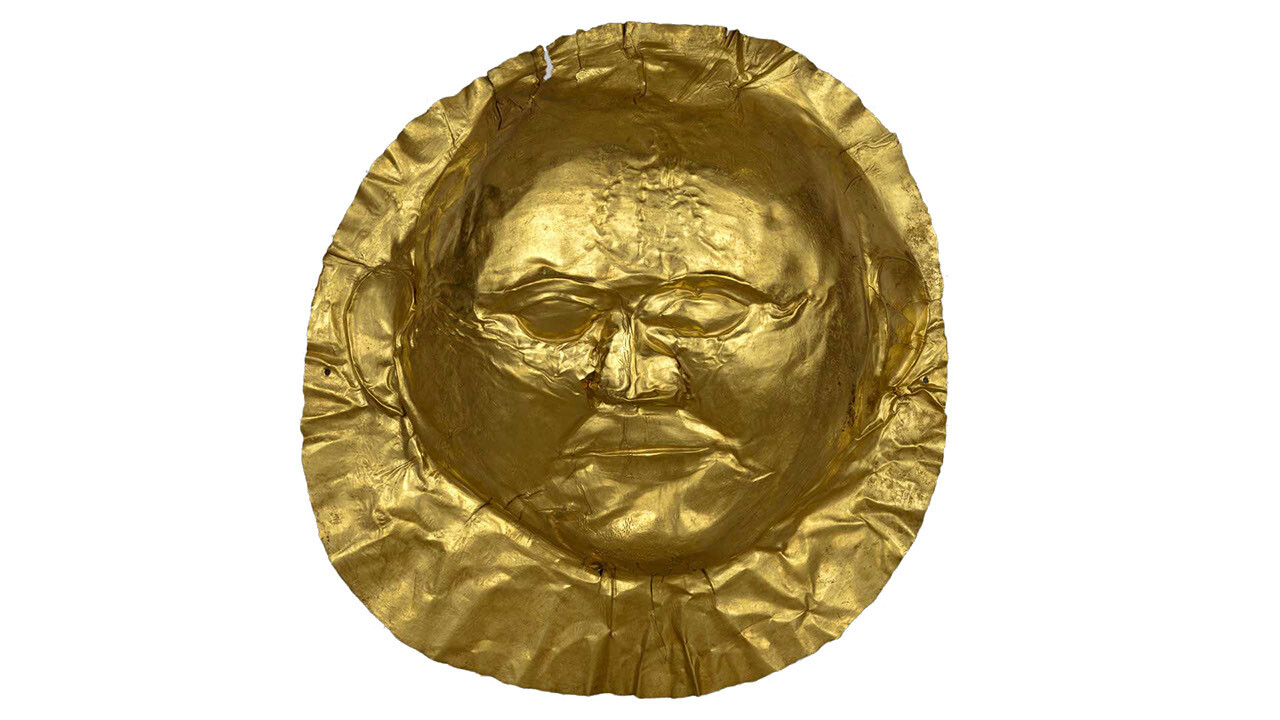
Shaft Grave VI
It contained two well-preserved burials of men, accompanied by a golden cup, two golden knee-covers, many bronze weapons (swords, daggers and spears) and clay vessels.

